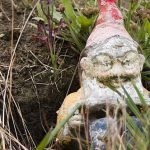 Creepy
Creepy  Creepy
Creepy  Technology
Technology 10 Scientific Breakthroughs of 2025 That’ll Change Everything
 Our World
Our World 10 Ways Icelandic Culture Makes Other Countries Look Boring
 Misconceptions
Misconceptions 10 Common Misconceptions About the Victorian Era
 Mysteries
Mysteries 10 Strange Unexplained Mysteries of 2025
 Miscellaneous
Miscellaneous 10 of History’s Most Bell-Ringing Finishing Moves
 History
History 10 Great Escapes That Ended Right Back in Captivity
 Weird Stuff
Weird Stuff 10 Fascinating Things You Might Not Know About Spiders
 Food
Food 10 Everyday Foods You Didn’t Know Were Invented by the U.S. Military
 History
History 10 Odd Things Colonial Americans Kept at Home
 Creepy
Creepy 10 More Representations of Death from Myth, Legend, and Folktale
 Technology
Technology 10 Scientific Breakthroughs of 2025 That’ll Change Everything
 Our World
Our World 10 Ways Icelandic Culture Makes Other Countries Look Boring
Who's Behind Listverse?

Jamie Frater
Head Editor
Jamie founded Listverse due to an insatiable desire to share fascinating, obscure, and bizarre facts. He has been a guest speaker on numerous national radio and television stations and is a five time published author.
More About Us Misconceptions
Misconceptions 10 Common Misconceptions About the Victorian Era
 Mysteries
Mysteries 10 Strange Unexplained Mysteries of 2025
 Miscellaneous
Miscellaneous 10 of History’s Most Bell-Ringing Finishing Moves
 History
History 10 Great Escapes That Ended Right Back in Captivity
 Weird Stuff
Weird Stuff 10 Fascinating Things You Might Not Know About Spiders
 Food
Food 10 Everyday Foods You Didn’t Know Were Invented by the U.S. Military
 History
History 10 Odd Things Colonial Americans Kept at Home
10 Surprising Things Found or Left on the Moon
The Moon’s surface is a desolate place, a landscape composed of dusty craters and barren mountains. But since 1959, its inventory of objects has been steadily expanding thanks to humanity—beginning with the Soviet probe Luna 2, the first human-made object to reach the lunar surface. While it’s well known that the Moon is now a graveyard of probes and landers, some rather unusual items remain there. And humans aren’t the only source of strangeness—the celestial body has produced a few surprises of its own.
Related:10 Bizarre Ways The Moon Affects Life On Earth
10 A Now-Blank Family Photograph
When astronaut Charles Duke prepared for Apollo 16 in 1972, he decided to bring his family along symbolically. NASA photographer Ludi Benjamin shot Duke with his wife and two sons, all dressed in their Sunday best, posing in their backyard. On the back, they signed their names, and Duke wrote: “This is the family of Astronaut Duke from Planet Earth. Landed on the Moon, April 1972.”
During the mission’s final moments, Duke placed the plastic-encased photo face-up on the lunar surface and photographed it lying there. Decades of ultraviolet radiation and temperature extremes have almost certainly bleached the once-vivid image of the smiling Duke family beyond recognition.[1]
9 Flashes of Light
People have reported mysterious lights on the Moon for centuries. One of the earliest accounts comes from 1178, when monk Gervase of Canterbury wrote that he saw the Moon “suddenly split in two,” followed by fire and sparks.
Modern astronomers call such events “transient lunar phenomena” (TLP). Once dismissed as optical illusions, they’re now known to include real flashes caused mainly by meteoroid impacts. According to the European Space Agency’s NELIOTA project, telescopes regularly record several impact flashes per hour during observation sessions.
Most are simply rocks crashing into the lunar surface, but ancient witnesses may have mistaken bright atmospheric meteors for lunar events. The fiery spectacle that Gervase described, for instance, was once linked to the Giordano Bruno crater but is now believed to have been a meteor breaking up in Earth’s atmosphere.[2]
8 Mists and Clouds
The Moon has no real weather; its atmosphere is far too thin for wind or rain. Yet astronomers have occasionally reported what looked like mists or clouds.
In 1956, Dinsmore Alter photographed a haze partly obscuring Alphonsus crater. Two years later, Nikolai Kozyrev captured a reddish blur over the crater’s central peak and suggested he had witnessed a volcanic eruption. Other scientists disagreed, arguing that the spectral data fit escaping cold gases rather than hot lava.
Today, most researchers think such hazes were brief releases of gas or dust from beneath the surface rather than evidence of active volcanoes. The Moon may be quiet, but it can still burp from time to time.[3]
7 A Falcon Feather
Apollo 15 commander Dave Scott staged one of science’s most elegant demonstrations. To honor Galileo, he proved that, in a vacuum, objects of different weights fall at the same rate. Because his lunar module was named Falcon, he chose an actual falcon feather for the experiment.
Before the mission, Scott had visited the U.S. Air Force Academy in Colorado Springs—home of the Falcons—and collected a few feathers. Standing on the Moon, he dropped the feather and a hammer side by side. “I guess one of the reasons we got here today was because of a gentleman named Galileo,” he said. As expected, both objects struck the ground simultaneously—an unforgettable tribute to physics and curiosity alike.[4]
6 A Piece of Lava from Earth
When astronaut James Irwin joined Apollo 15, he carried a small piece of Oregon lava given to him years earlier by Floyd Watson, a building inspector he’d met during training near Bend. Watson asked that the rock be left on the Moon as a memento.
After returning home, Irwin mailed him a photograph of the lunar surface with an arrow and the note: “Oregon lava on the Moon!” The gesture unofficially fulfilled Watson’s request—making that humble sample from Devils Lake perhaps the only confirmed piece of Earth rock deliberately left behind by an astronaut.[5]
5 A Blue-Colored Crater
The Apollo 15 crew noticed a strange feature on the lunar surface: a crater that appeared blue. Known today as Ina, it measures about 210 feet (64 meters) deep and just under 2 miles (3.2 kilometers) wide.
The hue, however, is not truly visible to the naked eye. Ina’s “blue” tones appear in enhanced photographs that emphasize titanium-rich rocks and immature soils. The feature itself is a volcanic depression—or “irregular mare patch”—whose composition makes it reflect light differently from the surrounding terrain.
Elsewhere on the Moon, titanium basalts add bluish tones, while minerals such as olivine lend patches of green or yellow-brown. The Moon may look gray, but up close, it’s surprisingly colorful.[6]
4 An Anomalous Metallic Mass
Beneath the Moon’s largest impact scar—the South Pole–Aitken Basin, 1,550 miles (2,500 kilometers) wide and 6 miles (10 kilometers) deep—scientists have detected something extraordinary: a buried mass of metal roughly five times the size of Hawaii’s Big Island.
Discovered in 2019 using NASA’s GRAIL and LRO data, the anomaly likely weighs more than a quintillion tons. Researchers suspect it could be the remnant core of the asteroid that gouged the basin—or perhaps a dense pocket of oxide-rich magma frozen deep within the crust.
Either way, it’s proof that even after billions of years, the Moon still hides some heavy secrets.[7]
3 Bags of Urine, Feces, and Vomit
Roughly 500,000 pounds (226,800 kilograms) of human artifacts litter the Moon—and not all of them are glamorous. Among the debris are about 96 bags of astronaut waste: urine, feces, and vomit discarded to lighten return loads on the six Apollo missions.
For scientists, those unappetizing leftovers offer a unique experiment. Microbes in the feces could reveal how life endures radiation and extreme temperatures over decades. It’s unlikely any survived, but even dead organisms can yield insights. “It’s a stretch, but it is possible we could discern whether or not these life forms might have mutated early on,” NASA scientist Mark Lupisella once said.
Beyond gross curiosity, the question matters for future missions. On Mars, for example, dumping human waste could contaminate samples and complicate the search for life.[8]
2 An Urn
Only 12 people have walked on the Moon, but one man went further—Eugene Shoemaker, the only person buried there. Denied astronaut training for medical reasons, the geologist helped found planetary science and co-discovered Comet Shoemaker–Levy 9 with his wife, Carolyn, and astronomer David Levy.
After his death in 1997, colleague Carolyn Porco arranged to send a portion of his ashes to the Moon through Celestis, a company specializing in memorial spaceflights. NASA approved the plan, and the remains flew aboard Lunar Prospector, launched January 6, 1998. When the mission ended on July 31, 1999, the spacecraft was deliberately crashed into a lunar crater—making Shoemaker the first and only person to be laid to rest on the Moon.[9]
1 A Drawing of a Penis
In 1969, sculptor Forrest “Frosty” Myers wanted to add art to the space race. He recruited Andy Warhol, Robert Rauschenberg, David Novros, John Chamberlain, and Claes Oldenburg to etch tiny drawings onto a ceramic tile less than an inch long—a miniature “museum” for the Moon.
NASA never officially approved the project, but Myers claims a sympathetic engineer attached one of the tiles to the Apollo 12 lander. The artwork, known as the Moon Museum, reportedly still rests there today. Warhol’s contribution was a scribble he insisted was his initials—though it looks very much like a penis. Whether official or smuggled, it means the first artwork on the Moon was also its first dirty joke.[10]








